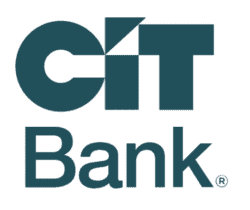Dave Ramsey is one of the most popular personal finance gurus in the space. He offers books like Total Money Makeover and financial classes via Financial Peace University.
Ramsey’s Baby Steps plan helps people achieve financial freedom. You’ve likely heard of these seven baby steps, which are basic money principles and actions.
Whether you follow all of them or only the first few, it can be a legitimate way to improve your finances.
Table of Contents
What Are Dave Ramsey’s 7 Baby Steps?
Getting back on track financially can be a challenge if you don’t have a road map. However, by taking purposeful steps, you can achieve success.
As a preview, here are the seven steps of the Dave Ramsey plan. In order to have victory, he argues that you should take each step successively.
| Step | Action |
|---|---|
| 1 | Build a $1,000 emergency fund |
| 2 | Use the debt snowball to pay off your debt |
| 3 | Save 3 to 6 months of expenses in your emergency fund |
| 4 | Invest 15 percent of your income in a Roth IRA |
| 5 | Save for your kids' college needs |
| 6 | Pay off your mortgage early |
| 7 | Build wealth and give |
This list requires a lot of work, so taking it one step at a time is essential.
Most households struggle to pay off debt since they don’t know how to make a plan. While this program isn’t perfect for everyone, these steps have helped millions of people find a way to get out of debt and save money.
Following these baby steps takes work, but they’re straightforward. You can start at the first step and advance to the next steps as you achieve the various milestones.
Keep in mind that you may need to personalize these steps for your unique money goals.
Step 1: Save $1,000 to Start an Emergency Fund
Being able to pay for emergencies is the first step. To be successful, you must build a starter emergency fund with a $1,000 balance.
This first step is important because the average American doesn’t have an emergency fund. Lack of savings is a big reason why people get into financial trouble.
Even if you’re struggling to get by or have a lot of debt, it’s important to save some money to cover unexpected expenses. If you don’t have any savings, you’ll rely on credit cards and personal loans in an emergency.
Credit cards and loans have excessive interest rates, making it harder to get out of debt.
While $1,000 may not cover several emergencies in a short period of time, it’s better than nothing. It also lets you focus on paying off your debt quickly.
In addition, it teaches you how to get into the act of saving. This pay-yourself-first strategy will serve you well as you get further into these steps.
Many people think it’s impossible to save at least $1,000, but it’s not. The key is to start saving as much as you can and automate regular transfers.
Pick a bank that lets you automate transfers, has a low minimum balance requirement, and pays a good rate.
CIT Bank is one option worth reviewing since they pay 1.55 percent in their Money Market account if you start with a $100 minimum balance.
This account has the same FDIC coverage as a savings account and is liquid. They do have higher-paying account options if you’re able to save more.
If the minimum balance requirement is too high, Chime Bank is another terrific option. Read our Chime Bank review to learn more.
If you have no money left at the end of the month, look for opportunities to change this. There are countless ways to cut costs or make money to increase savings.
Step 2: Use the Debt Snowball to Pay Off Debt
This step involves paying off all your non-mortgage debt. Dave Ramsey hates unsecured debt, but he is okay with people keeping their mortgage debt until later in the process since home loans have low interest rates.
Focus on paying these obligations first:
- Credit cards
- Student loans
- Car loans
- Personal loans
- Medical bills
- Any other type of non-mortgage debt
Consumer debt tends to have the highest interest rates. Paying off high-interest debt first can reduce your overall cost.
But how can you eliminate your debt? Here are a couple of options to consider.
Debt Snowball
The debt snowball method is one the most popular debt repayment options, and Dave Ramsey recommends this method in his baby steps plan. With this strategy, you pay off your smallest debt first.
Here is how to implement the debt snowball method:
| Step | Action |
|---|---|
| 1 | List your debts by balance size |
| 2 | Make extra payments on the smallest balance |
| 3 | Pay off the smallest balance |
| 4 | Apply extra payments to the next smallest balance |
| 5 | Repeat the process until you become debt-free |
If two balances are the same, pay off the one with the higher interest rate first. Also, continue to make the minimum monthly payment on your other balances to keep your accounts in good standing.
The snowball method can be the better option if you want “small victories” to keep your debt payoff momentum.
However, you may pay more in total interest than other strategies because the smallest balance may not have the highest interest rate.
Debt Avalanche
The debt snowball isn’t the only debt repayment option. A more aggressive strategy for getting out of debt is the debt avalanche.
With this strategy, you apply your extra debt payments to the highest interest rate first. All other debts should receive minimum payments until the higher rate balance is paid off.
Here is how the debt avalanche works.
| Step | Action |
|---|---|
| 1 | List your debts by balance size |
| 2 | Make extra payments on the higher interest rate debt |
| 3 | Pay the minimum on all other debts |
| 4 | Repeat the process until you become debt-free |
In most cases, credit card balances are the first debts you pay off, even if their balance is higher than other loans with a lower interest rate.
How to Choose a Debt Repayment Method
Which method you choose doesn’t really matter. If you are committed and consistent, you will get the desired result of becoming debt-free.
Like saving money, the key is to start. There are many ways to pay off debt fast once you get started.
Dave Ramsey calls for gazelle-like speed when paying off debt. By following some of the ways to pay off debt quickly, you can kill it faster than you think.
If your debt is high-interest and overwhelming, consolidation might be a good choice. SoFi could be one option to lower your rates.
*Related: If you have student loans, you may want to consider consolidating or refinancing. Read our review of SoFi student loans to see why they may be a good option.
Step 3: Save Three to Six Months of Expenses
After paying off debt, you return to building your emergency fund. Instead of making extra debt payments, you can stash more money in a savings account.
In this step, you focus on saving between three and six months of household expenses to reach a fully funded emergency fund.
For example, if your monthly expenses are around $3,000, this means you’ll need to save between $9,000 and $18,000.
Many personal finance experts suggest having at least three to six months of living expenses in case you lose your job. In time, you might save more than six months to cover large expenses or have more financial freedom.
That amount can be overwhelming, but don’t let it keep you from saving. There are many money-saving ideas that can give you a head start at building your savings.
You can achieve the third baby step sooner by reducing your monthly expenses. The less you spend, the longer your emergency savings will last.
You can also read our guide on recommended budget percentages to identify how much you should spend in each category.
Using a budgeting app like You Need A Budget (YNAB), Mint, or Tiller, can be a fantastic resource. You can use one to identify subscriptions you no longer use or areas where you might be overspending.
Dave Ramsey has his own proprietary budgeting app, EveryDollar that’s available to use. It has both a paid and free option. Read our YNAB vs. EveryDollar analysis to learn more.
Living on a budget is essential to achieve success with this and all of the steps. Read our guide on how to budget to learn where to start.
*Related: Budgeting apps are a great way to manage your money. Read our guide on the top Mint.com alternatives to identify the best platforms to find opportunities to save.
Step 4: Invest 15 Percent in Retirement Accounts
Saving for retirement should be one of your first priorities after paying off debt and accumulating several months of cash reserves. Investing at least 15 percent of your income can help you afford retirement.
Once you reach this step, make sure you are taking full advantage of employer-sponsored retirement plans.
Also, consider opening an individual retirement account (IRA) or a 401(k) for tax-advantaged retirement investing.
You will need to decide if you want to open a traditional or Roth retirement account. It’s possible to open both types.
Traditional IRA and 401(k) contributions reduce your taxable income dollar-for-dollar in the current tax year. The funds grow tax-deferred, and you only pay taxes once you make a withdrawal.
Roth retirement accounts come from post-tax dollars. You pay income taxes on the contribution amount upfront but don’t pay taxes again, even on the withdrawals.
Read our guide on the best places to open a Roth IRA to learn more.
Many brokers have low investment minimums and let you open a retirement account with $500 or less.
Step 5: Save For Your Children’s College Fund
Some people want to pay for their child’s college tuition, so it’s terrific that this is one of the baby steps.
Once your retirement planning is under control, you can start your child’s college fund. If they’re younger, a 529 plan offers significant benefits.
With a 529 plan, you can put the funds in a variety of investment choices. It’s also possible to have family members gift money into this kind of education savings account.
When your child prepares for college, they can withdraw the funds, tax-free, for qualified education expenses. Depending on where you live, you may receive some tax benefits for the contributions.
As your child gets closer to attending college, look for ways to reduce costs. Some examples include:
- Attending a community college for the first year or two
- Consider a trade school if a four-year university doesn’t fit their goals.
If they pair that with looking for ways to make money in college, your child should be on solid ground and avoid excessive student loan debt.
Step 6: Pay Off Your Mortgage Early
Paying off your mortgage early is the American dream to be truly debt-free. Not having mortgage debt is one of the final steps for several reasons.
Many mortgages take up to 30 years to repay, meaning you have more time to pay off the balance if you only have a small amount of extra income.
House payments also have lower interest rates than consumer debt. However, they are a large monthly expense that prevents you from saving or investing as much money as possible.
Making extra mortgage payments is not easy, but there are a couple of ways to achieve this goal.
One option is to get a side hustle and apply the extra earnings to your mortgage. You can deliver meals with DoorDash to make money on the side and increase your income.
This delivery app lets you set your schedule and work in your free time. Earnings are paid weekly.
A second option is refinancing your mortgage to find a lower interest rate and pay it off sooner. Don’t forget to calculate closing costs to determine your potential savings.
Ramsey is also a fan of 15-year mortgages as they have lower interest rates than a 30-year mortgage, and you’re debt-free sooner.
While 15-year home loans come with a higher payment, they allow you to pay off your mortgage faster and save significant money.
Step 7: Build Wealth and Give
Building wealth and helping others is the final baby step. If you reach this point, you’re in pretty good shape financially. You’ll have no debt, a solid retirement account, a paid-off home, and some college savings for your kids.
You may have invested small amounts of money in non-retirement accounts or helped your favorite charities while paying off debt. But now, since you’re on the last step, you can use most of your cash for these goals.
It’s important to diversify your investments to reduce the risk of losing your hard-earned wealth.
In addition to investing in stocks, consider real estate to earn passive income from rent payments and selling properties for a profit.
RealtyMogul invests in properties across the United States, earns quarterly dividends, and has a minimum $1,000 investment.
Read our guide on the top Fundrise alternatives to identify other possibilities for real estate investing.
Giving back to others can be a reward of wealth building. These baby steps can change your life, and now you can help others have a better life.
Since you’re likely more financially well-off in this step, you’re better positioned to give to charity and support causes you care about.
How to Start on the Baby Steps
Beginning this plan may seem difficult if you have financial struggles. Here are some tips for success.
Decide on Your Why
Knowing your “why” can motivate you to start and continue pursuing each step. Some reasons for wanting to pay off debt and save money include:
- Not worrying about money
- Sleeping peacefully
- Improving your credit score
- Affording long-term goals
- Leaving a financial legacy for your children
- Retiring on time
- Moving into a better neighborhood
Everyone has different goals. Pick one or two dreams you want to accomplish to keep your motivation high.
Educate Yourself
You don’t need to know a lot about how money works or how to manage it. There are many free resources that can help you grow in financial literacy as you progress through the steps.
The important thing to remember is to start and learn from any mistakes you make along the way.
Give Yourself Time
Achieving a single step can take months or years to accomplish. Not completing all seven baby steps in a matter of weeks can be frustrating.
Celebrate your progress each month as you move closer to getting your finances in order.
This is even more important if you’re on a fixed income. Read our guide on ways to save money on a tight budget to identify opportunities to reduce spending.
Commit to Change
Reducing debt and pursuing financial freedom can require a lifestyle change like losing weight.
When cleaning up your finances, you may have to learn to defer purchases or avoid impulse buys. Instead, you can use your disposable income to make extra debt payments, save for emergencies, or invest.
These new money habits may seem boring, but they may prevent future money stress and help you stay out of debt.
They also help you avoid things like cash advance apps when short on funds. Change takes time, but it’s simpler when you commit to a long-term goal.
Why the Baby Steps Work
Many people believe you need to be an expert to manage money to achieve financial stability. That is a myth. What often holds people back is fear of failure or simply not knowing where to start.
What makes Dave Ramsey’s baby steps helpful is that it breaks down the process of achieving success. When you finish one step, that creates confidence to attack the next step.
If you lack confidence and aren’t sure you will be successful, having a plan to guide you through the stages of managing your money empowers many to strive towards their financial goal.
Downsides of the Baby Steps
Overall, Dave Ramsey’s Baby Steps are a uniform example of how to become financially stable, pay off debt, and grow wealth. However, they don’t work for everyone.
One downside is how this process often markets itself as a one-size-fits-all solution that will help everyone.
The first few steps make the most sense as they can help almost anyone avoid debt and afford paying for emergencies. After that, people might have different goals or aspirations to improve their net worth.
Some might want to invest and build their emergency fund simultaneously. Others may want to start a business or invest in the stock market instead of using their extra money to pay their home off early.
Some of the advanced steps might not be practical for everyone. For example, you may not have children going to college. Or, you might prefer to rent instead of own a home.
Furthermore, only starting with saving just $1,000 may leave you prone to the risk of being unable to manage a major emergency.
Ultimately, there are lots of questions and variables. While this plan isn’t going to appeal to everyone, the steps do work for certain people. There are millions of people who have benefited from following them.
As you start going through the steps, make sure to adjust them to your unique situation as needed.
How Long Do Dave Ramsey’s Baby Steps Take?
There is no set timetable for the Dave Ramsey plan since it depends on your particular situation. Some of the steps will take less time than others.
For example, you may be able to build the $1,000 starter emergency fund within several months. However, if you have $10,000 in debt, it may take you a couple of years to erase.
The more you’re able to intensify your efforts, the sooner you will finish the plan.
Bottom Line
Whether you agree or disagree with the order of the steps, Dave Ramsey is consistent in what he says about money management. He makes it clear that you do better when you focus on one step at a time.
The baby steps are best for people who want to live a debt-free life long-term. If you’re okay with certain types of debt, have different goals, or are unwilling to make sacrifices, the plan may not be for you.
However, if you are willing to do the work and are debt-averse, following the steps will put you on a course toward financial security.
What are you doing to actively take control of your finances?
*Earning more on certain types of orders (ex. alcohol): Earn more per order as compared to restaurant orders. Actual earnings may differ and depend on factors like number of deliveries you accept and complete, time of day, location, and any costs. Hourly pay is calculated using average Dasher payouts while on a delivery (from the time you accept an order until the time you drop it off) over a 90 day period and includes compensation from tips, peak pay, and other incentives.
*Get paid instantly (DasherDirect): Subject to approval
*Cash out daily (Fast Pay): Fees apply
*Start Dashing today: Subject to background check and availability
*Dash anytime: Subject to availability
*Personal Loan Disclaimer: Fixed rates from 8.99% APR to 25.81% APR reflect the 0.25% autopay interest rate discount and a 0.25% direct deposit interest rate discount. SoFi rate ranges are current as of 05/19/23 and are subject to change without notice. Not all applicants qualify for the lowest rate. See Personal Loan eligibility details. Lowest rates reserved for the most creditworthy borrowers. Your actual rate will be within the range of rates listed and will depend on the term you select, evaluation of your creditworthiness, income, and a variety of other factors. See APR examples and terms.
Loan amounts range from $5,000– $100,000. The APR is the cost of credit as a yearly rate and reflects both your interest rate and an origination fee of 0%-6%, which will be deducted from any loan proceeds you receive.
Autopay: The SoFi 0.25% autopay interest rate reduction requires you to agree to make monthly principal and interest payments by an automatic monthly deduction from a savings or checking account. The benefit will discontinue and be lost for periods in which you do not pay by automatic deduction from a savings or checking account. Autopay is not required to receive a loan from SoFi.
Direct Deposit Discount: To be eligible to potentially receive an additional (0.25%) interest rate reduction for setting up direct deposit with a SoFi Checking and Savings account offered by SoFi Bank, N.A. or eligible cash management account offered by SoFi Securities, LLC (“Direct Deposit Account”), you must have an open Direct Deposit Account within 30 days of the funding of your Loan. Once eligible, you will receive this discount during periods in which you have enabled payroll direct deposits of at least $1,000/month to a Direct Deposit Account in accordance with SoFi’s reasonable procedures and requirements to be determined at SoFi’s sole discretion. This discount will be lost during periods in which SoFi determines you have turned off direct deposits to your Direct Deposit Account. You are not required to enroll in direct deposits to receive a Loan.
The following payment example depicts the APR, monthly payment and total payments made during the life of a personal loan with a single disbursement. All loan rates below are shown with the autopay discount (0.25%) and direct deposit discount (0.25%). The monthly payment for a $30,000 loan with a 60-month term and a fixed annual percentage rate (APR) between 12.95% – 25.03% would be $681.82 – $881.07 in monthly payments, with total payments between $40,909.47 – $52,864.05. Your actual interest rate may be different than the loan interest rates in these examples and will be based on term of loan, your financial history, and other factors, including your cosigner’s (if any) financial history. Lowest rates reserved for the most creditworthy borrowers. See SoFi.com/eligibility for details.
I’m John Schmoll, a former stockbroker, MBA-grad, published finance writer, and founder of Frugal Rules.
As a veteran of the financial services industry, I’ve worked as a mutual fund administrator, banker, and stockbroker and was Series 7 and 63-licensed, but I left all that behind in 2012 to help people learn how to manage their money.
My goal is to help you gain the knowledge you need to become financially independent with personally-tested financial tools and money-saving solutions.







Leave a Reply